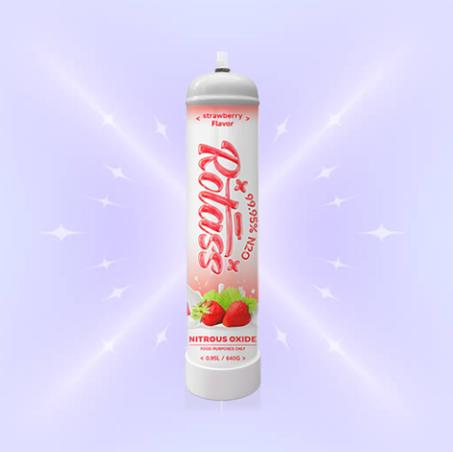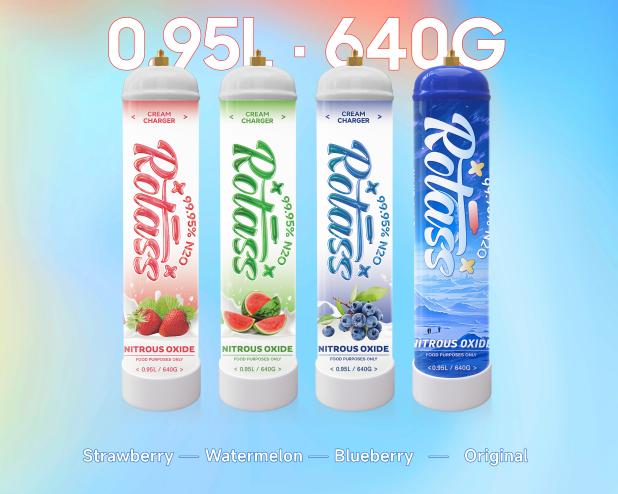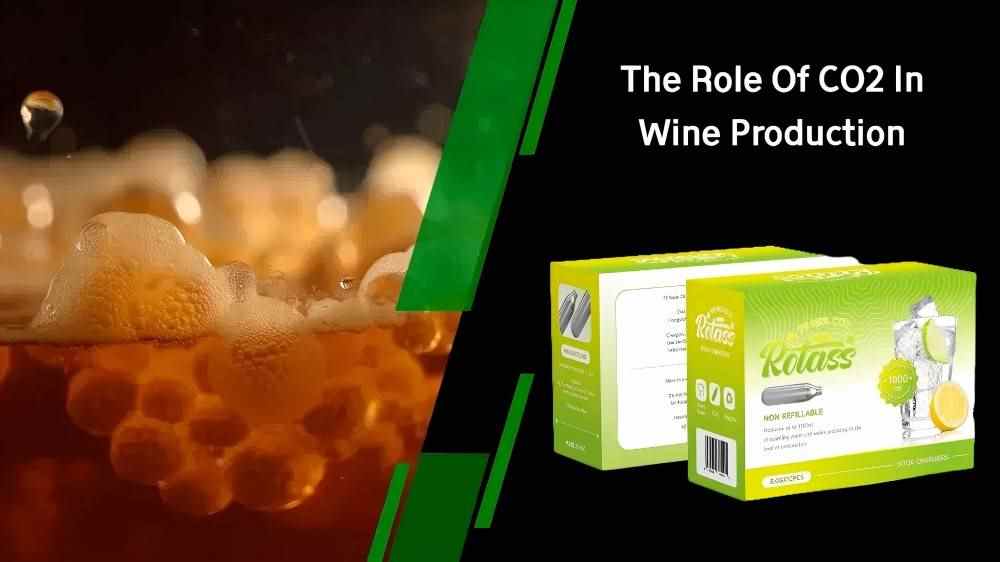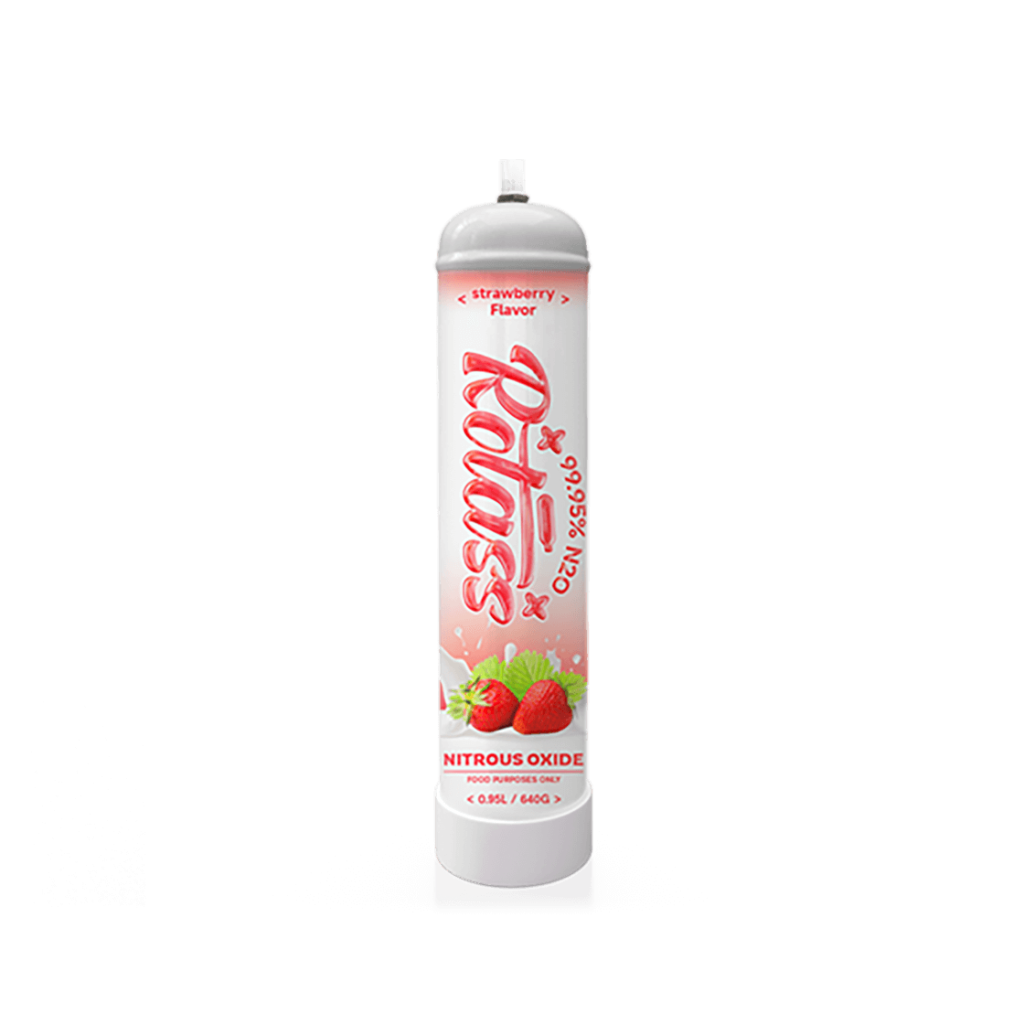2024 / 08 / 29
Food Grade Nitrous Oxide: More Than Just Whipped Cream
Food-grade nitrous oxide, often associated solely with whipped cream, offers a multitude of applications within the food industry. Beyond its culinary uses, nitrous oxide serves as a valuable tool for enhancing food quality, extending shelf life, and creating innovative products.
In this article, n2o cylinder supplier Rotass will give you the applications of nitrous oxide beyond whipped cream, and explore its benefits for food producers. We will discuss how nitrous oxide can be used to improve textures, flavors, and shelf life, as well as its role in creating unique culinary experiences. Additionally, we will address important safety considerations to ensure its proper and responsible use. By understanding the versatility and potential of nitrous oxide, food producers can leverage this valuable resource to enhance their products and meet the evolving demands of consumers.

Application of Food Grade Nitrous Oxide Besides Making Cream
Beyond whipping cream, food-grade nitrous oxide (N2O) finds a variety of applications within the food industry. You just need a nitrous oxide cylinder to make out kinds of products.
Freezing Mixtures
- Ice Cream: N2O helps to create a smoother and more consistent texture in ice cream by preventing the formation of large ice crystals. This results in a creamier, more indulgent product.
- Frozen Yogurt: N2O can be used to aerate frozen yogurt, giving it a lighter and more airy texture.
- Sorbet: By incorporating N2O into sorbet, manufacturers can create a more flavorful and refreshing product with a finer texture.
- Frozen Fruits: N2O can be used to freeze fruits at a lower temperature, preserving their flavor and texture.
Carbonation and Aeration
- Soft Drinks: N2O is commonly used to carbonate soft drinks, creating the characteristic fizz and effervescence.
- Beer: N2O can be used to carbonate beer, providing a smoother and creamier texture compared to carbon dioxide.
- Sparkling Wines: N2O can be used to carbonate sparkling wines, creating a more delicate and refined effervescence.
- Coffee: N2O can be used to create a foamy texture in coffee, similar to that of a cappuccino.
- Cocktails: N2O can be used to create a foamy texture in cocktails, such as a nitro martini or a nitro espresso martini.
- Whipped Cream: While this is a well-known application, N2O can be used to create a variety of whipped cream flavors and textures.
Extending Shelf Life
- Seafood: N2O can help to maintain the freshness and flavor of canned seafood by preventing oxidation and microbial growth.
- Fruits and Vegetables: N2O can be used to preserve the color, texture, and nutritional value of canned fruits and vegetables.
- Dairy Products: N2O can be used to extend the shelf life of canned dairy products, such as milk and yogurt.
Packaging
- Blister Packaging: N2O can be used to create a modified atmosphere within blister packaging, preserving the freshness of products like meat, seafood, and fruits.
- Vacuum Packaging: N2O can be used in combination with vacuum packaging to create a highly protective environment for perishable foods.
Culinary Arts
- Foams and Mousses: N2O can be used to create light and airy foams and mousses for various dishes, such as soups, desserts, and appetizers.
- Infused Liquids: N2O can be used to infuse liquids with a delicate gas bubble, adding a unique texture and flavor.
- Molecular Gastronomy: N2O is a popular tool in molecular gastronomy, allowing chefs to create innovative and visually stunning dishes.

Benefits of Using Food-Grade N2O in Food Production
Improved Texture
- Creamier Texture: Using nitrous oxide cylinder can create a smoother, creamier texture in products like ice cream, yogurt, and whipped cream.
- Airy Texture: N2O can aerate products, giving them a lighter and more airy texture, such as in frozen yogurt and whipped toppings.
- Uniform Texture: N2O can help to create a more uniform texture in products like frozen mixtures, preventing the formation of large ice crystals or lumps.
Extended Shelf Life
- Antimicrobial Properties: N2O’s antimicrobial properties help to inhibit the growth of bacteria, mold, and yeast, extending the shelf life of products.
- Reduced Oxidation: N2O can help to prevent oxidation, which can lead to spoilage and discoloration in foods.
- Preservation of Nutrients: By extending shelf life, N2O can help to preserve the nutritional value of food products.
Enhanced Flavor
- Improved Mouthfeel: N2O can create a unique mouthfeel, enhancing the overall flavor experience.
- Carbonation: N2O can be used to carbonate beverages, adding a refreshing and effervescent quality.
- Flavor Enhancement: N2O can enhance the flavor of certain foods by creating a more pleasant texture or by complementing existing flavors.
Versatility
- Wide Range of Applications: A nitrous oxide cylinder that can be used in a variety of food products, from frozen desserts to beverages and packaged goods.
- Customization: N2O can be used to create customized textures, flavors, and shelf lives, depending on the specific needs of the product.
- Innovation: N2O can be used to develop innovative new products and improve existing ones.

Safety Considerations of Using Food-Grade N2O
Inhalation Risks
Excessive inhalation of N2O can lead to hypoxia, a condition where the body’s tissues do not receive enough oxygen. This can cause symptoms such as dizziness, lightheadedness, and difficulty breathing. Prolonged exposure to N2O can deplete vitamin B12 levels, leading to neurological problems and anemia. In some cases, excessive inhalation of N2O can lead to addiction, similar to other inhalant substances. So if you have a nitrous oxide cylinder please make sure you are using it in the right way.
Food Contamination Risks
If N2O is not handled properly, it can contaminate food products. This can occur if the N2O cylinder or regulator is not clean, or if the gas is allowed to come into contact with food directly. Over-infusing food products with N2O can lead to excessive gas buildup, which can affect the texture, flavor, and safety of the product.
Safety Regulations and Best Practices
- Follow Regulations: Adhere to all local, national, and international regulations regarding the use of food-grade N2O. This includes obtaining necessary permits and licenses and complying with safety standards.
- Proper Storage: Store N2O cylinders in a secure, well-ventilated area, away from heat sources and flammable materials.
- Safe Handling: Use appropriate safety equipment, such as gloves and protective eyewear, when handling N2O cylinders and regulators.
- Avoid Inhalation: Do not inhale N2O directly from the cylinder or regulator.
- Proper Equipment: Use high-quality, approved equipment for dispensing and handling N2O.
- Training: Ensure that all personnel who handle N2O are properly trained in safe handling procedures.

Leveraging the Power of Food-Grade Nitrous Oxide
Food-grade nitrous oxide can improve texture, extend shelf life, enhance flavor, and create unique culinary experiences making it a popular choice for manufacturers and chefs alike. However, it’s essential to handle nitrous oxide with care and adhere to safety guidelines to minimize potential risks. By understanding the benefits and considerations associated with using nitrous oxide, food producers can leverage its potential while ensuring the safety and quality of their products. If you want to get more information, please consult n2o cylinder supplier Rotass. We will give you the professional guides and advice.










